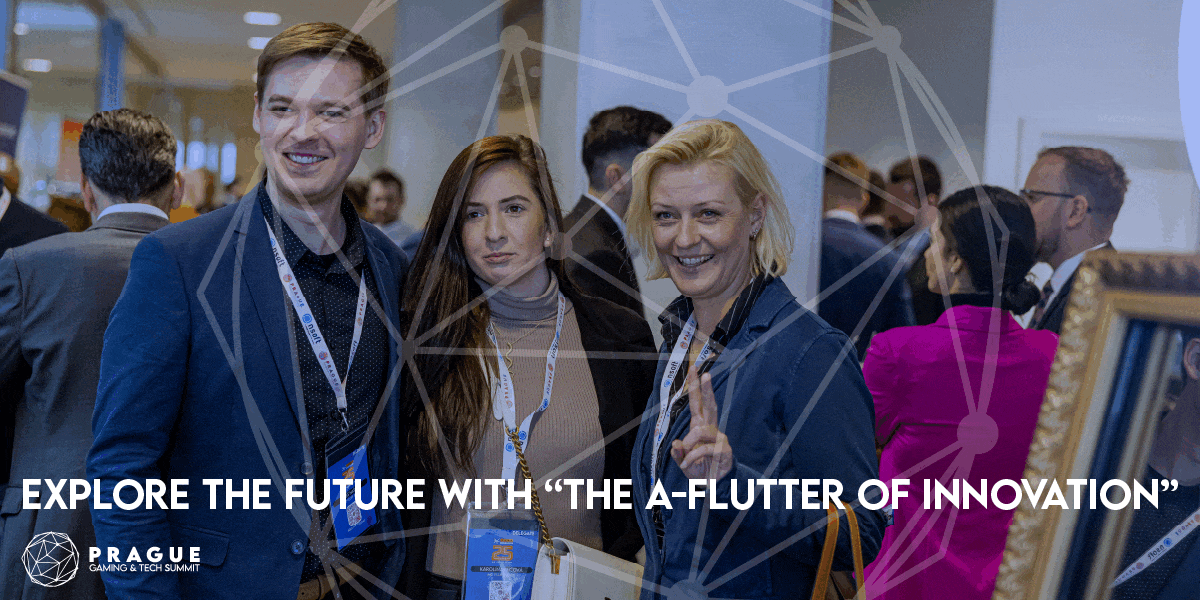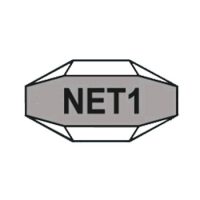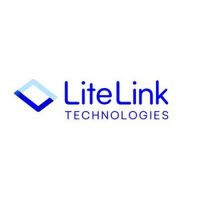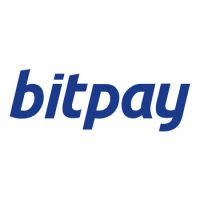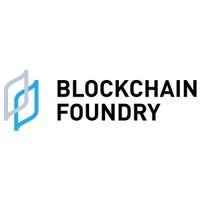Blockchain
Bridging Innovation and Regulation: How Yellow Network is Transforming Non-Custodial Trading in a Pro-Crypto Future

Introduction:
As the global crypto landscape stands on the brink of transformation, driven by evolving regulations and technological advancements, the intersection of innovation, compliance, and trust has never been more critical. With the anticipated pro-crypto stance of the upcoming U.S. administration, the industry finds itself at a pivotal moment. For blockchain innovators and decentralized finance (DeFi) leaders, the balance between cutting-edge solutions and regulatory alignment will shape the future of crypto markets.
In this exclusive interview, Louis Bellet, CEO of Yellow Network, shares his insights on the evolving regulatory environment, the challenges of liquidity fragmentation, and how Yellow Network’s decentralized clearing solution is set to redefine non-custodial trading. From addressing inefficiencies to enabling institutional-grade performance, Louis explains how Yellow Network is paving the way for a more unified, secure, and scalable DeFi ecosystem.
1. How do you see the upcoming U.S. administration’s potential pro-crypto stance influencing the global crypto landscape?
Louis Bellet: “The anticipated shift in U.S. crypto policy could mark a pivotal moment for the industry’s maturation. While regulatory certainty is crucial, it’s not just about having rules—it’s about creating frameworks that encourage innovation while ensuring market stability and user protection. At Yellow, we’ve always maintained that thoughtful regulation is essential for long-term success.
If the new administration adopts clear, practical policies, it could set a global benchmark. The appointment of officials with industry expertise would help bridge the gap between innovation and regulation. This leadership could inspire jurisdictions worldwide to align their regulatory approaches, fostering more trust and collaboration in the crypto space.”
2. Yellow Network positions itself as a first-mover in compliance. How do you balance innovation with regulatory trust and security?
Louis Bellet: “We’ve always approached compliance as a foundational principle, not an afterthought. At Yellow, we integrate traditional financial market mechanisms, like clearing and risk management, with the transparency and efficiency of blockchain. This architecture ensures our solutions meet current regulations while remaining adaptable to future requirements.
Our focus is on enabling brokers, high-frequency traders, and exchanges to comply with necessary standards, like broker-dealer licenses, while delivering decentralized, real-time clearing solutions. Innovation and trust go hand in hand—by prioritizing both, we provide scalable systems that drive progress without compromising security or reliability.”
3. How does Yellow’s decentralized clearing solution address current challenges in the DeFi ecosystem?
Louis Bellet: “The biggest challenge in today’s crypto market is liquidity fragmentation—assets are scattered across chains, creating inefficiencies and high costs. Yellow’s cross-chain clearing solution acts as a unifying layer that connects these isolated liquidity pools.
We bypass the need for traditional centralized bridges, which have repeatedly shown security vulnerabilities. By using blockchain technology and direct peer-to-peer state channels, brokers can achieve high-frequency, cross-chain trading with instant settlements. This not only mirrors the reliability of traditional financial systems but also enhances efficiency and trust within the DeFi ecosystem.”
4. With the U.S. emerging as a potential regulatory leader, how might this impact competition with other crypto-friendly regions like the EU or Asia?
Louis Bellet: “I believe strong U.S. leadership in crypto regulation could catalyze global collaboration, not competition. Clear frameworks in the U.S. can serve as a blueprint for other jurisdictions like the EU or Asia.
For instance, the UAE has already demonstrated leadership by implementing strict yet transparent regulatory standards. Many U.S.-based operators are setting up operations in regions like this, highlighting the global nature of crypto markets. At Yellow, we work with partners across multiple jurisdictions to ensure our solutions comply with local regulations, promoting interoperability and cooperation on a global scale.”
5. What role does Yellow Network play in shaping the future of non-custodial trading?
Louis Bellet: “Our mission is to prove that non-custodial trading can deliver the same institutional-grade performance as traditional systems, while keeping users in control of their assets. With Yellow’s solutions, traders get instant settlement, 24/7 operations, and unparalleled security—all without sacrificing decentralization.
As policies evolve, we’re demonstrating that decentralized systems can meet regulatory standards while preserving trust and transparency. Our platform sets the stage for the next era of trading, where efficiency and user autonomy coexist seamlessly.”
6. What advice would you give to blockchain innovators preparing for this shift in U.S. regulatory direction?
Louis Bellet: “Focus on building solutions that create real value rather than chasing short-term trends. Regulations are there to support responsible innovation and protect users—companies developing meaningful, scalable solutions will benefit the most from regulatory clarity.
Engage proactively with regulators and industry leaders. The more we demonstrate responsible practices and collaboration, the better the outcomes will be for the industry. Building trust with both policymakers and users is key to sustainable growth.”
7. How does Yellow Network ensure its solutions remain adaptable as crypto regulations and technologies evolve globally?
Louis Bellet: “Adaptability is at the core of Yellow Network’s strategy. Our infrastructure is designed to scale with both regulatory changes and technological advancements. We don’t aim to predict the future; instead, we create systems that are flexible enough to comply with diverse frameworks while maintaining their efficiency and performance.
Beyond the technology, we focus heavily on collaboration and education. By working closely with brokers, exchanges, and partners, we ensure our solutions align with real market needs. This approach positions Yellow Network as a long-term leader, capable of thriving in an ever-changing global landscape.”
Conclusion:
The future of blockchain and decentralized finance is on the cusp of a breakthrough, and Yellow Network is leading the charge. Through innovation, trust, and a commitment to regulatory adaptability, Yellow is tackling the challenges of liquidity fragmentation and redefining non-custodial trading. As the U.S. prepares for a pro-crypto shift, companies like Yellow Network demonstrate that with the right balance of innovation and compliance, the potential for growth is limitless.
Stay tuned as Yellow Network continues to shape the future of DeFi—pushing boundaries while laying the groundwork for a transparent, secure, and efficient global trading ecosystem.
The post Bridging Innovation and Regulation: How Yellow Network is Transforming Non-Custodial Trading in a Pro-Crypto Future appeared first on News, Events, Advertising Options.
Blockchain
Blocks & Headlines: Today in Blockchain – April 24, 2025 (Decrypt, CoinDesk, Cointelegraph, 80 Level, UNDP/BGA)

In an era defined by rapid innovation and ever-shifting regulatory landscapes, blockchain continues to prove its mettle across diverse sectors—from data privacy and prediction markets to gaming and sustainable development. Today in Blockchain, we explore five major developments shaping the decentralized world on April 24, 2025:
-
Europe’s New Privacy Guidelines: How the EDPB’s draft rules may redefine on-chain data handling.
-
Canada’s Blockchain Advantage: Lessons from Consensus Toronto on agility, talent, and national strategy.
-
Prediction Markets for Science: DeSci’s leap toward crowdsourced validation and the reproducibility crisis.
-
Ubisoft’s NFT Gaming Gamble: Yet another Web3 pivot in mainstream video games—and why it matters.
-
Blockchain for Good Accelerator: The UNDP joins forces with the Blockchain for Good Alliance to fuel SDG-focused innovation.
This op-ed–style briefing strips away the noise to deliver concise yet detailed coverage, incisive commentary, and big-picture implications for developers, entrepreneurs, regulators, and enthusiasts alike. Strap in as we decode today’s key blockchain headlines.
1. Europe’s Data Privacy Guardrails: EDPB’s Draft Blockchain Guidelines
What happened:
On April 22, 2025, the European Data Protection Board (EDPB) published draft guidelines clarifying how personal data must be stored and accessed on blockchain networks to comply with the General Data Protection Regulation (GDPR). Key takeaways include:
-
Minimize on-chain data: Avoid embedding personally identifiable information directly into immutable ledgers.
-
Data Protection by Design & by Default: Mandate early-stage DPIAs (Data Protection Impact Assessments) for any blockchain project touching personal data.
-
Controlled access & erasure mechanisms: Develop off-chain storage layers and governance protocols to satisfy “right to rectification” and “right to be forgotten” requirements.
Source: Decrypt
Why it matters:
GDPR’s foundational principles clash with blockchain’s inherent immutability and transparency. By issuing these guidelines, the EDPB seeks to preserve individual privacy rights without stifling decentralized innovation. However, the tension between censorship-resistant networks and regulator-mandated mutability raises profound design challenges.
Analysis & Commentary:
Today’s guidance is overdue but pivotal. As Bryn Bennett of Hacken reminds us, “Privacy isn’t an add-on—it’s infrastructure.” Projects that ignore privacy-by-design risk not only fines but also eroded user trust. Conversely, decentralized privacy pioneers like Nym Technologies warn that retrofitting GDPR onto public blockchains can compromise both privacy and sovereignty. In my view, the next frontier lies in hybrid architectures—leveraging off-chain zero-knowledge proofs, secure enclaves, and permissioned sidechains—to reconcile transparency with confidentiality. Europe’s blueprint could become a global reference, influencing regulators in Asia-Pacific, North America, and beyond to articulate their own blockchain-specific data rules.
2. Canada’s Blockchain Advantage: Small Enough to Move Fast, Big Enough to Matter
What happened:
At Consensus Toronto 2025, CoinDesk columnist William Mougayar argued that Canada is uniquely positioned to outpace other G7 nations in blockchain adoption, thanks to:
-
Homegrown talent & heritage: Ethereum’s origins in Toronto and thriving developer ecosystems in Montreal and Vancouver.
-
Regulatory agility: Streamlined federal-provincial coordination, pro-innovation tax credits, and pilot sandbox frameworks.
-
Strategic national vision: Proposals to mandate crypto access in Canadian banks, integrate digital assets into capital markets, and even explore a national cryptocurrency reserve.
Source: CoinDesk
Why it matters:
While the U.S. grapples with interagency turf wars between the SEC, CFTC, and others, Canada’s structural simplicity offers a template for coherent blockchain policymaking. This could accelerate capital inflows, enterprise pilots, and global competition for fintech talent.
Analysis & Commentary:
Canada’s playbook hinges on being “small enough to pivot, yet big enough to impact”. As blockchain matures beyond niche use cases, national champions will emerge from jurisdictions that marry regulatory clarity with creative incentives. I predict that within two years, Toronto and Montreal will rival Miami and Dubai as leading hubs for DeFi, tokenization, and digital-asset custody. But execution is everything—if Canada can streamline licensing, shore up AML/CTF safeguards, and embed digital literacy into its education system, it could truly leapfrog entrenched incumbents.
3. Prediction Markets in Science: DeSci’s Bold Experiment
What happened:
In an opinion piece for Cointelegraph, Dr. Sasha Shilina explored how blockchain-powered prediction markets (e.g., Polymarket, Pump.science) are being repurposed to address the scientific reproducibility crisis. Highlights include:
-
Crowdsourced forecasting: Researchers and investors stake tokens to bet on experimental outcomes, incentivizing rigorous study design.
-
Financial accountability: Monetary losses for flawed work create a rapid feedback loop, potentially weeding out irreproducible findings.
-
Regulatory hurdles: Jurisdictions still classify these markets as gambling, complicating mainstream adoption.
Source: Cointelegraph
Why it matters:
Traditional peer review can take months or years to expose methodological flaws. Decentralized prediction markets promise near-real-time validation, democratizing scientific oversight and reducing wasteful replication studies.
Analysis & Commentary:
Prediction markets offer an “open-science complement”—not a replacement—to scholarly publishing. By aligning economic incentives with truth-seeking, they could elevate data integrity and funders’ confidence. However, unchecked speculation risks gaming the system, especially if liquidity pools are dominated by a handful of whales. The solution lies in multi-stakeholder governance: academic consortia, journal publishers, and veteran researchers collaborating to set market parameters, oracle standards, and dispute-resolution mechanisms. In my view, the coming year will determine whether DeSci moves from proof-of-concept to institutional legitimacy—or remains a fascinating experiment.
4. Ubisoft’s NFT Gaming Bet: Might & Magic Fates
What happened:
On April 24, 2025, gaming giant Ubisoft announced Might & Magic Fates, its third blockchain game in under six months, developed in partnership with Immutable. Key features:
-
NFT trading cards: Creatures, spells, and artifacts minted as on-chain assets.
-
Optional Web3 layer: Players can choose between traditional gameplay or unlocking digital ownership via NFTs.
-
Community backlash: Early reactions decry “Web3 slop,” with seasoned gamers lamenting lack of gameplay previews.
Source: 80 Level
Why it matters:
Ubisoft’s persistence underscores a broader corporate push into play-to-earn and digital-ownership models. Despite vocal skepticism, top publishers see NFTs as a path to new revenue streams and player engagement metrics.
Analysis & Commentary:
I admire Ubisoft’s willingness to iterate—but will “third time be the charm”? Past misfires suggest they’ve yet to nail the balance between token mechanics and fun. If Fates can deliver rich narrative, balanced tokenomics, and genuine secondary-market value, it might convert skeptics. Otherwise, gamers will continue associating NFTs with pump-and-dump schemes. Successful blockchain gaming will require tight integration of on-chain assets with deep, off-chain gameplay loops—think on-chain skins that evolve with player achievements or governance tokens that shape in-game lore. Ubisoft’s true test will be fostering an ecosystem where NFT ownership enhances, rather than distracts from, core gameplay.
5. Blockchain for Good: UNDP & Alliance Launch Global Accelerator
What happened:
The Blockchain for Good Alliance (BGA), in partnership with the United Nations Development Programme (UNDP) and EMURGO Labs, launched the SDG Blockchain Accelerator on April 24, 2025. Program highlights:
-
4-month accelerator: Tailored training, mentorship, and technical support via UNDP AltFinLab and EMURGO Labs.
-
Multi-chain innovation: Encourages solutions across Cardano, Ethereum, and other protocols.
-
Up to $1.5 million in post-acceleration grants: Equity-free funding to scale blockchain solutions addressing the UN’s 17 Sustainable Development Goals (SDGs).
Source: UNDP Innovation
Why it matters:
This initiative bridges Web3 technology with humanitarian impact, channeling blockchain’s transparency and efficiency into real-world challenges—financial inclusion, supply-chain traceability, carbon credits, and more.
Analysis & Commentary:
SDG-focused accelerators signal a shift from speculative token swaps to impact-driven development. By equipping UNDP personnel and global innovators with blockchain toolkits, the program can catalyze projects that deliver measurable social value. Success stories—like transparent vaccine distribution chains or micro-loan platforms for underserved communities—will validate blockchain’s promise beyond hype cycles. I urge stakeholders to watch for pilots that blend on-chain verification with off-chain delivery, ensuring that funding flows transparently and outcomes are independently audited. If this Alliance proves out, it could redefine public-private partnerships in digital development.
Conclusion: Today’s Takeaways & Tomorrow’s Roadmap
These five headlines illustrate blockchain’s multifaceted evolution:
-
Regulatory Maturation: Europe’s privacy guidelines spotlight the need for nuanced frameworks to guide on-chain data use.
-
National Strategies: Canada’s agile approach demonstrates how government policy can catalyze ecosystem growth without heavy-handed bureaucracy.
-
Decentralized Science: Prediction markets could revolutionize research validation, forging new alliances between academia and DeFi.
-
Corporate Experimentation: Ubisoft’s repeated NFT forays reveal both the promise and pitfalls of integrating blockchain into mainstream entertainment.
-
Mission-Driven Innovation: The SDG Blockchain Accelerator aligns decentralized tech with societal goals, charting a course for truly “blockchain for good” outcomes.
As blockchain technology accelerates, the imperative for thoughtful design, cross-sector collaboration, and impact measurement has never been clearer. Whether tackling data privacy conflicts, mobilizing global talent, democratizing scientific rigor, reinventing digital ownership, or driving sustainable development, today’s stories offer a roadmap for the next chapter of decentralized innovation.
Stay tuned for tomorrow’s edition of Blocks & Headlines, where we continue decoding the daily pulse of the blockchain revolution.
The post Blocks & Headlines: Today in Blockchain – April 24, 2025 (Decrypt, CoinDesk, Cointelegraph, 80 Level, UNDP/BGA) appeared first on News, Events, Advertising Options.
Blockchain
World Chess and the Algorand Foundation propose leveling the playing field with a “chess passport”
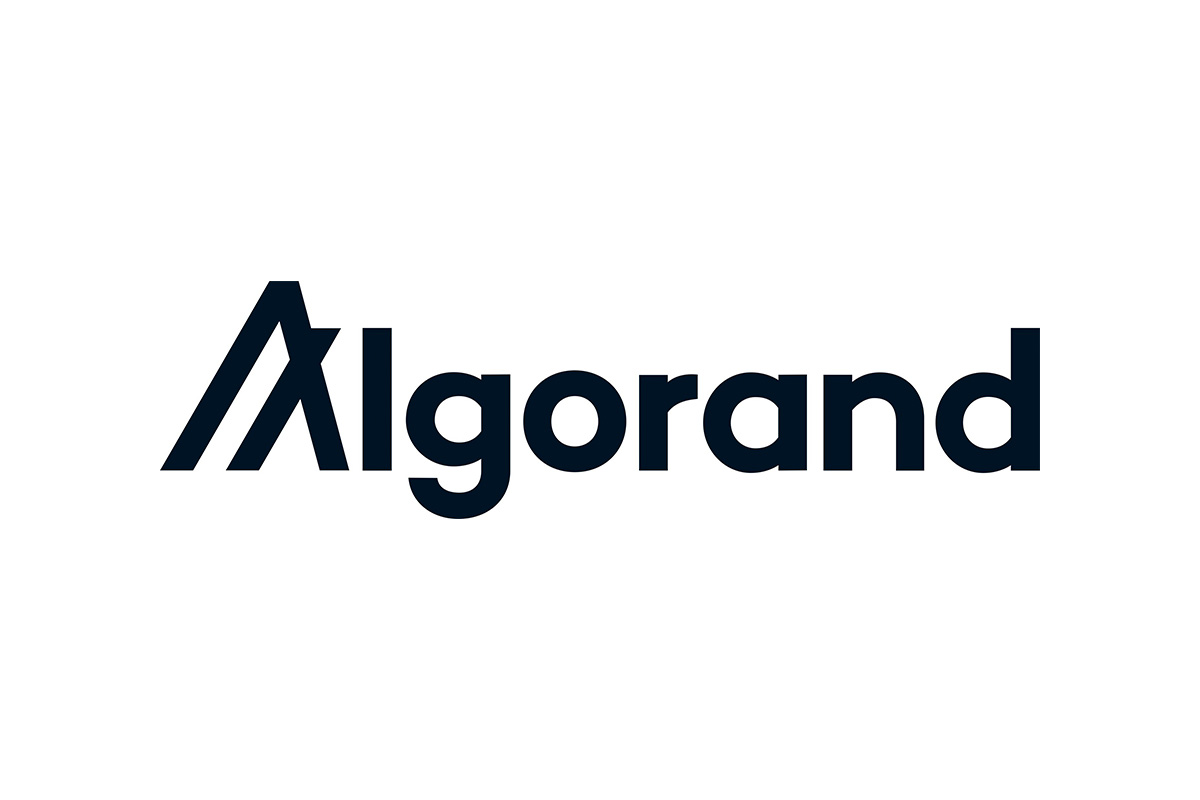
In a whitepaper published today, World Chess (LSE: CHSS) and the Algorand Foundation (ALGO) conceptualize a new blockchain-based system that would establish secure, private, and verifiable credentials for global sports organizations, including chess. Grandmaster Evgenij Miroshnichenko contributed to the paper alongside the Algorand Foundation and World Chess.
The move comes as interest in chess hits a new high, driven by popular television series on Netflix and the BBC, the 2024 awarding of the youngest-ever world chess champion, and the inclusion of chess for the first time in the Esports World Cup later this year.
If adopted, the system would allow chess players to independently manage their identity and credentials across all chess platforms and organizations with a single decentralized ID, and one login credential for everywhere they play. They could then easily “port” their identity, achievements, records of play, rankings, and rewards across online chess platforms, as well as seamlessly from the digital world to in-person games and tournaments. This provides them with a much easier way to prove their identity, no matter their status or documentation; it would also reduce tournament application times significantly. Chess organizations would then be able to welcome even more players to their competitions, including those who have built their chess career solely online, as well as players who have previously only competed in tournaments held by other organizations.
Among other benefits, the adoption of a “global chess passport” would make it much easier for organizers and chess clubs and federations alike to onboard and register players, both online and offline.
Another benefit of the proposed system is to safeguard fair play. As chess becomes increasingly integrated into e-sports and online competitions, the use of AI programs or player fraud (one player representing another) is an increasing concern. Being able to confirm player integrity (including whether they have been banned for cheating on any other platform) ensures credibility of chess contests and competitions. These verifiable credentials also preserve player privacy. They can be used to confirm player eligibility and relevant identity data without providing access to sensitive documentation, such as passports. Finally, identity verification also prevents fraud in tournament payouts. Phishing and other attempts to steal winnings are on the rise; this ensures only the rightful winner can access their prize funds.
“I think that chess needs its version of the global e-version of drivers license. It’s a global game, and using blockchain for the benefit of having one universal independently verifiable ID is something that both players and organizers will certainly benefit from,” says Ilya Merenzon, CEO of World Chess.
“This initiative is not just about chess; it’s about the future of fair play and verifiable achievement across all sports and esports,” said Bruno Martins, principal architect at the Algorand Foundation and co-author of the whitepaper. “Chess has a rich history of proving the usefulness of new technologies. In this case, World Chess is showing the integrity, privacy, and portability of records in any competitive arena is not only possible – it’s in the best interest of every player, everywhere.”
Statista estimates that the market for esports should reach $4.8 billion in 2025, with nearly 900 million players by 2029 (source), all of which could benefit from better cross-platform registration for online and in-person competitions.
The full whitepaper and more information about the proposed open-source system can be found here. Chess platforms, esports organizations and other parties interested in contributing to the project can get involved by contacting [email protected].
The post World Chess and the Algorand Foundation propose leveling the playing field with a “chess passport” appeared first on News, Events, Advertising Options.
Blockchain
Blaqclouds Board Approves 30-Day Revenue Acceleration and Ecosystem Monetization Plan
-

 Blockchain Press Releases6 days ago
Blockchain Press Releases6 days agoBybit’s CEO Meets with Vietnam’s Minister of Finance to Support Regulatory Sandbox and Strengthen Crypto Compliance
-

 Blockchain7 days ago
Blockchain7 days agoGlobal Islamic Fintech Forum Kicks off in Dubai
-
Blockchain4 days ago
Islamic finance Market to Reach $3.4 Trillion by 2027 in the short run and $7.7 Trillion by 2033 Globally, at 12.0% CAGR: Allied Market Research
-

 Blockchain Press Releases7 days ago
Blockchain Press Releases7 days agoBybit launches Crypto Surf: Copy Traders and Bots Battle for 250K USDT
-

 Blockchain3 days ago
Blockchain3 days agoBlocks & Headlines: Today in Blockchain – April 22, 2025 (Activity‑Weighted Consensus, Pectra Upgrade, Yoki Legacy, Verae–Evercycle, Earth Day)
-

 Blockchain2 days ago
Blockchain2 days agoBlocks & Headlines: Today in Blockchain – April 23, 2025 – EDPB, Binance, MicroCloud, Nile Coin, TruaBroker
-

 Blockchain Press Releases7 days ago
Blockchain Press Releases7 days agoTomorrowland Brasil 2025 General Sale in Full Swing — Exclusive Cashback for Bybit Cardholders
-

 Blockchain Press Releases4 days ago
Blockchain Press Releases4 days agoIntroducing Clementine Bridge: Citrea Deploys First Complete BitVM Bridge Design on Testnet

